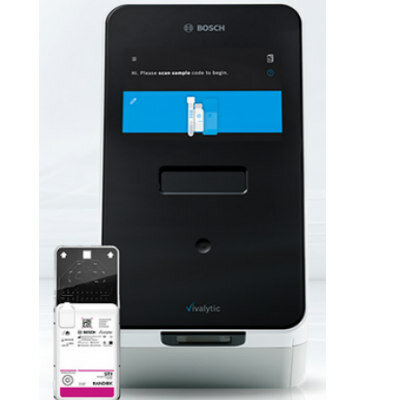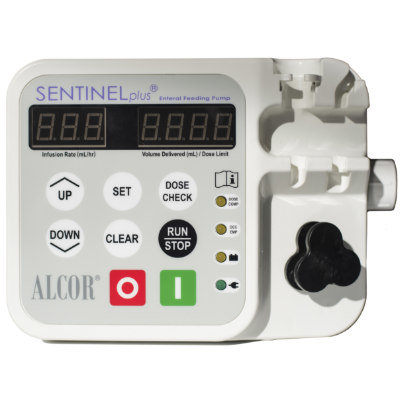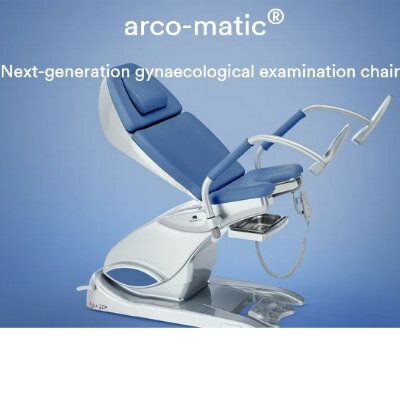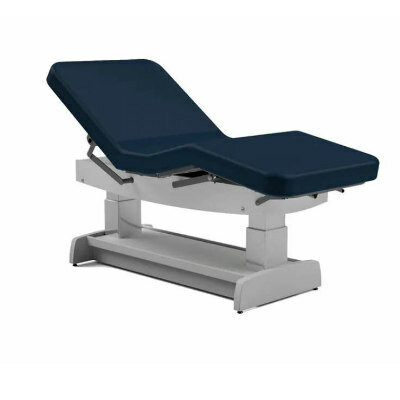Global Portable Ultrasound Equipment Market to Reach USD 2.5 Billion by 2026
|
By HospiMedica International staff writers Posted on 01 Jul 2021 |

Image: The vScan handheld ultrasound device (Photo courtesy of GE Healthcare)
The global portable ultrasound equipment market is projected to grow at a CAGR of 6.3% from USD 1.7 billion in 2020 to USD 2.5 billion by 2026, driven primarily by an increasing number of application areas, rising prevalence of diseases, and growing technological advancements.
These are the latest findings of a new market study published by Global Industry Analysts Inc. (San Francisco, CA, USA), a market research company.
Portable ultrasound machines, in general are ideal for small hospitals, PCP offices, obstetric practices, sports medicine clinics, small physician practice and independent clinics. By delivering relative ease in its operation, portable ultrasound devices have the potential to capture significant share in the point-of-care imaging market. Portable ultrasound devices are proving to be extremely useful in applications where space is the constraint and also where mobility of devices is required for example if scanning is required to be carried out on the field.
Portable ultrasound devices are increasingly used in various areas such as musculoskeletal, critical care medicine, and emergency medicine. Adoption of these devices has grown considerably on account of rising number of minimally invasive procedures and for prenatal and antenatal care of mothers who lack access to big healthcare facilities. They are also finding widespread use in urinary bladder dysfunction, abdominal evaluations, gallbladder visualization, DVT surveillance, and vascular access. Increasing AI integration in ultrasound devices, which provide the units with better diagnostics capability is another major factor promoting market growth.
On the basis of product type, the Cart/Trolley-based segment is projected to grow at a 6.4% CAGR to reach USD 2.5 billion by the end of the analysis period while the Handheld segment is expected to record a 4.8% CAGR for the next 7-year period. The Handheld segment currently accounts for a share of 8.1% of the global portable ultrasound equipment market. In terms of applications, cardiologists, intensivists, and emergency medicine physicians have been some of the initial users of handheld ultrasound systems. Over the years, supported by the integration of advanced features, the devices have also gained acceptance among anesthesia, procedural ultrasound, and other specialists.
Geographically, the US currently accounts for a share of 32.52% of the global portable ultrasound equipment market and is estimated to be valued at USD 590.9 million in 2021. China’s portable ultrasound equipment market is forecasted to record a CAGR of 8% through the analysis period to reach an estimated USD 257.5 million in 2026. The portable ultrasound equipment market in Japan and Canada are forecasted to grow at 5.4% and 5.7%, respectively over the analysis period. Within Europe, the portable ultrasound equipment market in Germany is forecasted to grow at approximately 5.9% CAGR while the market in Rest of Europe is expected to reach USD 279.3 million by the end of the analysis period. The developed economies account for a major share of the global portable ultrasound equipment market due to increasing prevalence of various diseases, well-developed healthcare infrastructure, easy reimbursement, and government support for technological developments. Economic growth, increasing healthcare spending, improved standard of healthcare facilities are expected to fuel the demand for new equipment in the developing markets.
Related Links:
Global Industry Analysts Inc.
These are the latest findings of a new market study published by Global Industry Analysts Inc. (San Francisco, CA, USA), a market research company.
Portable ultrasound machines, in general are ideal for small hospitals, PCP offices, obstetric practices, sports medicine clinics, small physician practice and independent clinics. By delivering relative ease in its operation, portable ultrasound devices have the potential to capture significant share in the point-of-care imaging market. Portable ultrasound devices are proving to be extremely useful in applications where space is the constraint and also where mobility of devices is required for example if scanning is required to be carried out on the field.
Portable ultrasound devices are increasingly used in various areas such as musculoskeletal, critical care medicine, and emergency medicine. Adoption of these devices has grown considerably on account of rising number of minimally invasive procedures and for prenatal and antenatal care of mothers who lack access to big healthcare facilities. They are also finding widespread use in urinary bladder dysfunction, abdominal evaluations, gallbladder visualization, DVT surveillance, and vascular access. Increasing AI integration in ultrasound devices, which provide the units with better diagnostics capability is another major factor promoting market growth.
On the basis of product type, the Cart/Trolley-based segment is projected to grow at a 6.4% CAGR to reach USD 2.5 billion by the end of the analysis period while the Handheld segment is expected to record a 4.8% CAGR for the next 7-year period. The Handheld segment currently accounts for a share of 8.1% of the global portable ultrasound equipment market. In terms of applications, cardiologists, intensivists, and emergency medicine physicians have been some of the initial users of handheld ultrasound systems. Over the years, supported by the integration of advanced features, the devices have also gained acceptance among anesthesia, procedural ultrasound, and other specialists.
Geographically, the US currently accounts for a share of 32.52% of the global portable ultrasound equipment market and is estimated to be valued at USD 590.9 million in 2021. China’s portable ultrasound equipment market is forecasted to record a CAGR of 8% through the analysis period to reach an estimated USD 257.5 million in 2026. The portable ultrasound equipment market in Japan and Canada are forecasted to grow at 5.4% and 5.7%, respectively over the analysis period. Within Europe, the portable ultrasound equipment market in Germany is forecasted to grow at approximately 5.9% CAGR while the market in Rest of Europe is expected to reach USD 279.3 million by the end of the analysis period. The developed economies account for a major share of the global portable ultrasound equipment market due to increasing prevalence of various diseases, well-developed healthcare infrastructure, easy reimbursement, and government support for technological developments. Economic growth, increasing healthcare spending, improved standard of healthcare facilities are expected to fuel the demand for new equipment in the developing markets.
Related Links:
Global Industry Analysts Inc.
Latest Business News
- Johnson & Johnson Acquires Cardiovascular Medical Device Company Shockwave Medical
- Mindray to Acquire Chinese Medical Device Company APT Medical
- Olympus Acquires Korean GI Stent Maker Taewoong Medical
- Karl Storz Acquires British AI Specialist Innersight Labs
- Stryker to Acquire French Joint Replacement Company SERF SAS
- Medical Illumination Acquires Surgical Lighting Specialist Isolux
- 5G Remote-Controlled Robots to Enable Even Cross-Border Surgeries

- International Hospital Federation Announces 2023 IHF Award Winners
- Unprecedented AI Integration Transforming Surgery Landscape, Say Experts

- New WHO Guidelines to Revolutionize AI in Healthcare
- Getinge Acquires US-Based Medical Equipment Provider Healthmark Industries
- Global Surgical Lights Market Driven by Increasing Number of Procedures
- Global Capsule Endoscopy Market Driven by Demand for Accurate Diagnosis of Gastrointestinal Conditions
- Global OR Integration Market Driven by Need for Improved Workflow Efficiency and Productivity
- Global Endoscopy Devices Market Driven by Increasing Adoption of Endoscopes in Surgical Procedures
- Global Minimally Invasive Medical Devices Market Driven by Benefits of MIS Procedures
Channels
Artificial Intelligence
view channel
AI-Powered Algorithm to Revolutionize Detection of Atrial Fibrillation
Atrial fibrillation (AFib), a condition characterized by an irregular and often rapid heart rate, is linked to increased risks of stroke and heart failure. This is because the irregular heartbeat in AFib... Read more
AI Diagnostic Tool Accurately Detects Valvular Disorders Often Missed by Doctors
Doctors generally use stethoscopes to listen for the characteristic lub-dub sounds made by heart valves opening and closing. They also listen for less prominent sounds that indicate problems with these valves.... Read moreCritical Care
view channel
Deep-Learning Model Predicts Arrhythmia 30 Minutes before Onset
Atrial fibrillation, the most common type of cardiac arrhythmia worldwide, affected approximately 59 million people in 2019. Characterized by an irregular and often rapid heart rate, atrial fibrillation... Read more
Breakthrough Technology Combines Detection and Treatment of Nerve-Related Disorders in Single Procedure
The peripheral nervous system (PNS) serves as the communication network that links the brain and spinal cord to every other part of the body. It consists of two parts: the somatic nervous system, which... Read moreSurgical Techniques
view channel
Hydrogel-Based Miniaturized Electric Generators to Power Biomedical Devices
The development of engineered devices that can harvest and convert the mechanical motion of the human body into electricity is essential for powering bioelectronic devices. This mechanoelectrical energy... Read moreWearable Technology Monitors and Analyzes Surgeons' Posture during Long Surgical Procedures
The physical strain associated with the static postures maintained by neurosurgeons during long operations can lead to fatigue and musculoskeletal problems. An objective assessment of surgical ergonomics... Read more.jpg)
Custom 3D-Printed Orthopedic Implants Transform Joint Replacement Surgery
The evolving field of 3D printing is revolutionizing orthopedics, especially for individuals requiring joint replacement surgeries where traditional implants fail to provide a solution. Although most people... Read more
Cutting-Edge Imaging Platform Detects Residual Breast Cancer Missed During Lumpectomy Surgery
Breast cancer is becoming increasingly common, with statistics indicating that 1 in 8 women will develop the disease in their lifetime. Lumpectomy remains the predominant surgical intervention for treating... Read morePatient Care
view channel
Surgical Capacity Optimization Solution Helps Hospitals Boost OR Utilization
An innovative solution has the capability to transform surgical capacity utilization by targeting the root cause of surgical block time inefficiencies. Fujitsu Limited’s (Tokyo, Japan) Surgical Capacity... Read more
Game-Changing Innovation in Surgical Instrument Sterilization Significantly Improves OR Throughput
A groundbreaking innovation enables hospitals to significantly improve instrument processing time and throughput in operating rooms (ORs) and sterile processing departments. Turbett Surgical, Inc.... Read more
Next Gen ICU Bed to Help Address Complex Critical Care Needs
As the critical care environment becomes increasingly demanding and complex due to evolving hospital needs, there is a pressing requirement for innovations that can facilitate patient recovery.... Read moreGroundbreaking AI-Powered UV-C Disinfection Technology Redefines Infection Control Landscape
Healthcare-associated infection (HCAI) is a widespread complication in healthcare management, posing a significant health risk due to its potential to increase patient morbidity and mortality, prolong... Read moreHealth IT
view channel
Machine Learning Model Improves Mortality Risk Prediction for Cardiac Surgery Patients
Machine learning algorithms have been deployed to create predictive models in various medical fields, with some demonstrating improved outcomes compared to their standard-of-care counterparts.... Read more
Strategic Collaboration to Develop and Integrate Generative AI into Healthcare
Top industry experts have underscored the immediate requirement for healthcare systems and hospitals to respond to severe cost and margin pressures. Close to half of U.S. hospitals ended 2022 in the red... Read more
AI-Enabled Operating Rooms Solution Helps Hospitals Maximize Utilization and Unlock Capacity
For healthcare organizations, optimizing operating room (OR) utilization during prime time hours is a complex challenge. Surgeons and clinics face difficulties in finding available slots for booking cases,... Read more
AI Predicts Pancreatic Cancer Three Years before Diagnosis from Patients’ Medical Records
Screening for common cancers like breast, cervix, and prostate cancer relies on relatively simple and highly effective techniques, such as mammograms, Pap smears, and blood tests. These methods have revolutionized... Read morePoint of Care
view channel
Critical Bleeding Management System to Help Hospitals Further Standardize Viscoelastic Testing
Surgical procedures are often accompanied by significant blood loss and the subsequent high likelihood of the need for allogeneic blood transfusions. These transfusions, while critical, are linked to various... Read more
Point of Care HIV Test Enables Early Infection Diagnosis for Infants
Early diagnosis and initiation of treatment are crucial for the survival of infants infected with HIV (human immunodeficiency virus). Without treatment, approximately 50% of infants who acquire HIV during... Read more
Whole Blood Rapid Test Aids Assessment of Concussion at Patient's Bedside
In the United States annually, approximately five million individuals seek emergency department care for traumatic brain injuries (TBIs), yet over half of those suspecting a concussion may never get it checked.... Read more















